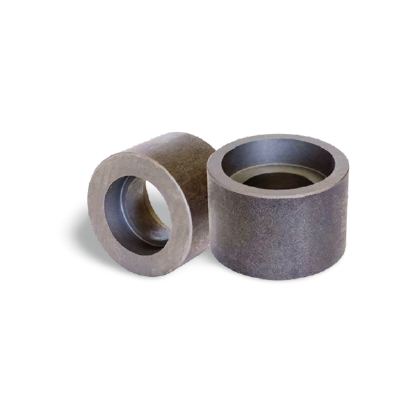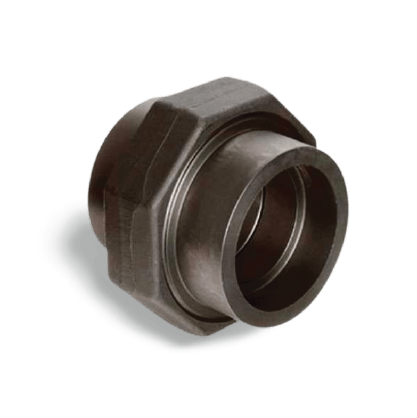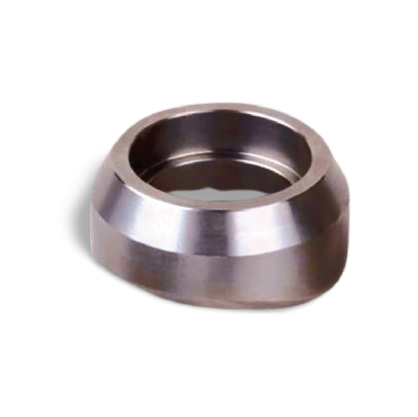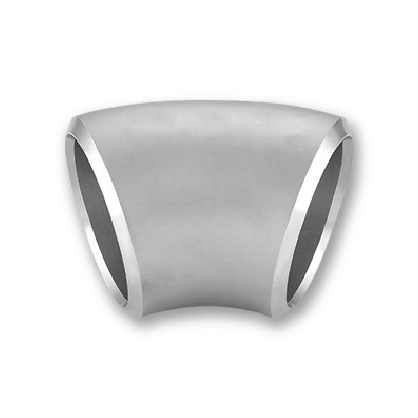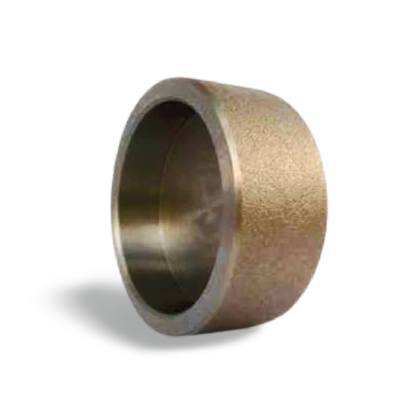
Socket Weld Cap
Teshi Fittings premier Socket Weld Caps, meticulously designed for a multitude of industries including Petroleum, Chemical, Hydraulic, Food, and more. Engineered with precision and manufactured to meet rigorous international quality standards, our Socket Weld Caps ensure dependable sealing and seamless integration within piping systems. Committed to excellence and exceeding customer expectations, Teshi Fittings guarantees superior performance and longevity in every fitting, offering tailored solutions to meet specific project requirements. Trust in Teshi Fittings’ expertise for all your piping needs and experience the unmatched quality of our Socket Weld Caps.
Standard Specification of Socket Weld Cap
| Dimensions | ASME 16.11, MSS SP-79, MSS SP-95, 83, 95, 97, BS 3799 |
| Size | 1/8″ NB TO 4″ NB |
| Type | Socket Weld (S/W) & SCREWED (SCRD) – NPT, BSP, BSPT |
| DIN | DIN2605, DIN2615, DIN2616, DIN2617, DIN28011 |
| Production Grades | Stainless Steel, Alloy Steel, Duplex, Nickel Alloys, Low temperature Steel, Carbon Steel, Nickel |
| EN | EN10253-1, EN10253-2 |
| Form | Socket Weld Cap, Socket Weld End Cap, Socket Weld Pipe Cap |
Material & Grades of Socket Weld Cap
| Stainless Steel Forged Socket Weld Cap | ASTM A182 F304, F304L, F306, F316L, F304H, F309S, F309H, F310S, F310H, F316TI, F316H, F316LN, F317, F317L, F321, F321H, F11, F22, F91, F347, F347H, F454L, ASTM A312/A403 TP304, TP304L, TP316, TP316L |
| Duplex & Super Duplex Steel Forged Socket Weld Cap | ASTM A 182 – F 51, F53, F55 S 31803, S 32205, S 32550, S 32750, S 32760, S 32950. |
| Carbon Steel Forged Socket Weld Cap | ASTM/ ASME A 105, ASTM/ ASME A 350 LF 2, ASTM / ASME A 53 GR. A & B, ASTM A 106 GR. A, B & C. API 5L GR. B, API 5L X 42, X 46, X 52, X 60, X 65 & X 70. ASTM / ASME A 691 GR A, B & C |
| Nickel Alloy Forged Socket Weld Pipe Cap | ASTM / ASME SB 336, ASTM / ASME SB 564 / 160 / 163 / 472, UNS 2200 (NICKEL 200) , UNS 2201 (NICKEL 201 ) , UNS 4400 (MONEL 400 ) , UNS 8020 ( ALLOY 20 / 20 CB 3 ) , UNS 8825 INCONEL (825) , UNS 6600 (INCONEL 600 ) , UNS 6601 (INCONEL 601) , UNS 6625 (INCONEL 625) , UNS 10276 (HASTELLOY C 276) |
| Alloy Steel Forged Socket Weld Cap | ASTM / ASME A 182, ASTM / ASME A 335, ASTM / ASME A 234 GR P 1, P 5, P 9, P 11, P 12, P 22, P 23, P 91, ASTM / ASME A 691 GR 1 CR, 1 1/4 CR, 2 1/4 CR, 5 CR, 9CR, 91 |
| Copper Alloy Steel Forged Socket Weld Cap | ASTM / ASME SB 111 UNS NO. C 10100 , C 10200 , C 10300 , C 10800 , C 12000, C 12200, C 70600 C 71500, ASTM / ASME SB 466 UNS NO. C 70600 ( CU -NI- 45/10) , C 71500 ( CU -NI- 70/30) |
Dimension of Butt Weld Cap
Class 3000 Socket Weld Cap Dimensions NPS 1/2 to 2
| NPS | Socket Bore | Depth Socket | Length Cap | Diameter Cap |
| B | J | Q | R | |
| 1/2 | 21.95 21.70 | 10 | 19 | 32 |
| 3/4 | 27.30 27.05 | 13 | 23 | 38 |
| 1 | 34.05 33.80 | 13 | 26 | 45 |
| 1.1/4 | 42.80 42.55 | 13 | 28 | 55 |
| 1.1/2 | 48.90 48.65 | 13 | 30 | 65 |
| 2 | 61.35 61.10 | 16 | 36 | 75 |
| 2.1/2 | 74.20 73.80 | 16 | 38 | 92 |
| 3 | 90.15 89.80 | 16 | 42 | 110 |
| 4 | 115.80 115.45 | 19 | 48 | 140 |
Class 6000 Socket Weld Pipe Cap Dimensions NPS 1/2 to 2
| NPS | Socket Bore | Depth Socket | Length Cap | Diameter Cap |
| B | J | Q | R | |
| 1/2 | 21.95 21.70 | 10 | 22 | 34 |
| 3/4 | 27.30 27.05 | 13 | 26 | 41 |
| 1 | 34.05 33.80 | 13 | 28 | 50 |
| 1.1/4 | 42.80 42.55 | 13 | 30 | 58 |
| 1.1/2 | 48.90 48.65 | 13 | 32 | 66.5 |
| 2 | 61.35 61.10 | 16 | 38 | 85 |
Manufacturing process and features of Socket Weld Cap
Socket weld caps are essential components in piping systems, providing a means to close off the end of a pipe or a fitting. Here’s an overview of their manufacturing process and features:
Manufacturing Process:
- Material Selection: Socket weld caps are typically made from materials like stainless steel, carbon steel, alloy steel, or other suitable materials depending on the application requirements.
- Material Preparation: The chosen material is initially in the form of sheets, plates, or rods. These materials undergo initial processing, which may involve cutting, shaping, or molding to achieve the desired dimensions for the caps.
- Forming the Cap Shape: The prepared material is then formed into the shape of a cap through processes such as forging, casting, or machining. Forging involves shaping the material using compressive forces, while casting involves pouring molten metal into molds. Machining utilizes lathes, mills, or CNC machines to shape the material.
- Socket Weld End Preparation: One end of the cap is prepared for socket welding. This involves chamfering or beveling the inner diameter of the cap to facilitate the welding process.
- Surface Finishing: After forming, the caps may undergo surface finishing processes like polishing, grinding, or coating to enhance their appearance, corrosion resistance, and durability.
- Quality Control: Throughout the manufacturing process, quality control measures are implemented to ensure that the caps meet dimensional tolerances, material specifications, and performance requirements.
- Final Inspection and Packaging: Once manufactured, the socket weld caps undergo final inspection to verify their quality and dimensions. They are then packaged according to specifications for shipping and distribution.
Features of Socket Weld Caps:
- Socket Weld Connection: Socket weld caps feature a socket weld end that allows them to be easily welded onto the end of a pipe or fitting, providing a secure closure.
- High Pressure Rating: Socket weld caps are designed to withstand high-pressure applications, making them suitable for various industrial environments.
- Leak Tight Seal: When properly welded, socket weld caps provide a leak-tight seal, ensuring the integrity of the piping system.
- Durable Construction: Socket weld caps are typically made from robust materials, making them resistant to corrosion, erosion, and other forms of wear and tear.
- Versatility: These caps are available in various sizes, materials, and configurations to suit different piping system requirements.
- Easy Installation: Socket weld caps are relatively easy to install, requiring only simple welding equipment and procedures.
- Cost-Effective: Compared to other closure methods, socket weld caps offer a cost-effective solution for sealing pipe ends.
Overall, socket weld caps play a crucial role in ensuring the safety, integrity, and functionality of piping systems across a wide range of industries.
Application Of Socket Weld Cap
| Paper & Pulp Companies | Socket welds used for fluid and chemical transport due to corrosion resistance. |
| Stainless Steel in Oil and Gas | Used for corrosion resistance in pipelines, refineries, and petrochemical plants. |
| Socket Weld Elbows in Chemical Refineries | Change pipe direction while withstanding chemicals. |
| Alloy Steel in Pipelines | Strong fittings for high-pressure and corrosive environments. |
| High-Temperature Applications | Socket weld elbows endure elevated temperatures in power generation. |
| Water Pipeline | Reliable joints for municipal, industrial, and irrigation water systems. |
| ANSI B16.9 in Nuclear Plants | Meets standards for nuclear power plant systems. |
| High-Pressure Applications | Ideal for hydraulic systems and gas lines. |
| Fabrication & Welding | Essential for secure structural joints in various industries. |
| Food Processing & Dairy | Hygienic fittings for leak-proof connections in food industries. |
| Boilers & Heat Exchangers | Used to join piping in high-temperature applications. |
Socket Weld Cap Available Types
| Forged Socket weld Pipe Cap | 6000LB Socket weld Pipe Cap |
| 150 lb. Socket Weld Fittings Pipe Cap | 9000LB Socket weld Forged Cap |
| SS Forged Socket weld Pipe Cap | Forged Pipe Caps 3000LB Socket Weld |
| Stainless Steel Pipe Cap Suppliers | ASME B16.11 Forged Socket weld Pipe Cap |
| ANSI B16.11 Forged Socket weld Pipe Cap | BS 3799 Forged Socket Weld Pipe Caps |
| Carbon Steel Socket weld Pipe Cap | Duplex Steel Socket weld Pipe Cap |
| ASTM A182 Socket weld Stainless Steel Pipe Cap | High Quality Socket weld Pipe Cap Manufacturer |
| Super Duplex Steel End Pipe Caps | Copper Nickel Socket weld Pipe Cap |
| High Nickel Alloy Forged Socket weld Pipe Cap | Hastelloy Socket weld Pipe Cap |
| Titanium Forged Socket weld Pipe Cap | Inconel Socket weld Pipe Caps |
Others Products
Frequently Asked Questions
Most frequent questions and answers




